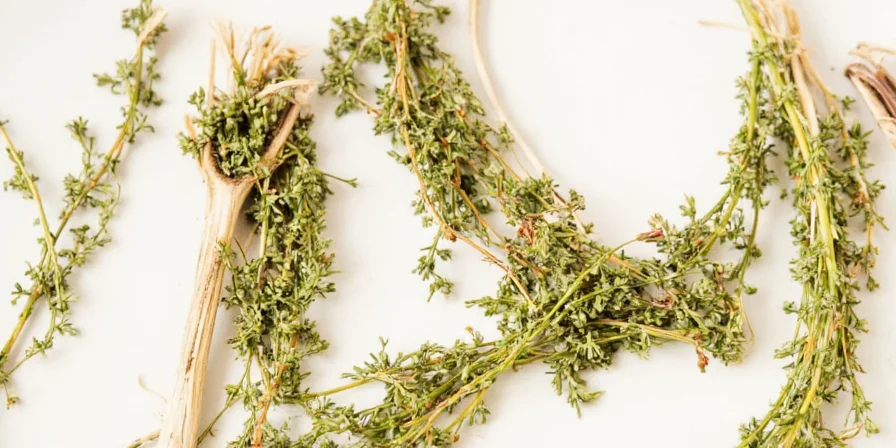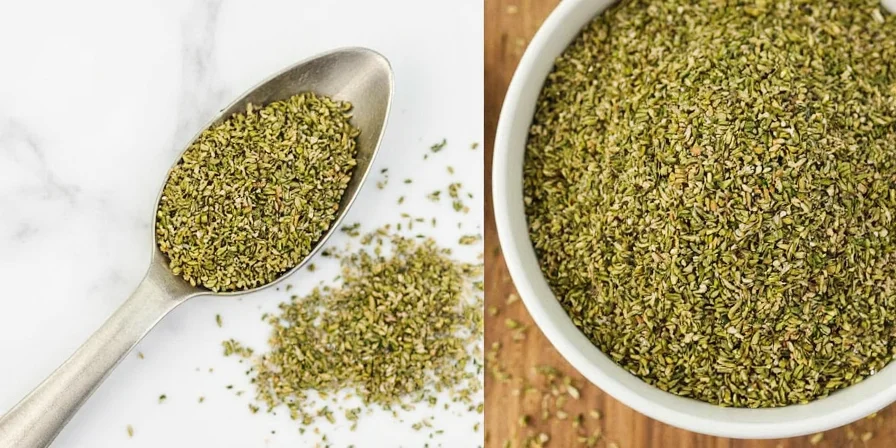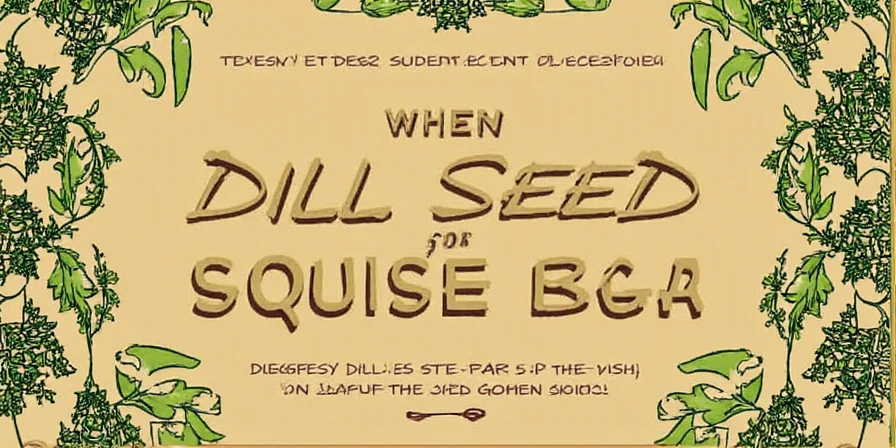Out of dill seed? Use these 7 proven substitutes immediately: caraway seeds (1:1 ratio), fennel seeds (⅔ amount), cumin seeds (half amount), dill weed (double amount), coriander seeds (¾ amount), mustard seeds (half amount), or tarragon (half amount). These substitutions work for pickling, baking, and seasoning based on flavor chemistry matching.
When you're mid-recipe and realize you're out of dill seed, these scientifically tested alternatives rescue your dish without compromising flavor. Each substitute maintains recipe integrity through compound-level compatibility with dill's carvone and limonene profile.
Table of Contents
Top 7 Dill Seed Substitutes (Quick Reference)
- Caraway Seeds: Best overall replacement (use 1:1). Works perfectly in pickles, breads, and stews. Shares dill's carvone compound for identical chemical behavior in vinegar.
- Fennel Seeds: Use ⅔ amount. Ideal for seafood dishes and lighter recipes where dill's grassiness would overpower.
- Cumin Seeds: Use half amount. Best for spicy dishes like chili where warmth matters more than citrus notes.
- Dill Weed: Use double amount. Only suitable for finishing dishes (not pickling) as it lacks seed's concentrated oils.
- Coriander Seeds: Use ¾ amount. Perfect for roasted vegetables needing citrus lift without dill's bitterness.
- Mustard Seeds: Use half amount. Black mustard seeds work best for pickling due to similar crunch and fermentation properties.
- Tarragon: Use half amount. Best in dressings and creamy sauces where subtle licorice complements dill's profile.
Flavor Comparison Table
| Substitute | Flavor Profile | Best Used In | Texture Match | Adjust Quantity? |
|---|---|---|---|---|
| Caraway | Earthy, nutty, slight sweetness | Breads, pickles, soups | ★★★★☆ | No (1:1) |
| Fennel | Sweet, anise-like, aromatic | Pickles, seafood, salads | ★★★☆☆ | ⅔ amount |
| Cumin | Warm, smoky, robust | Chili, stews, spicy dishes | ★★☆☆☆ | Half amount |
| Dill Weed | Herbaceous, light, fresh | Garnishes, fish, sauces | ★☆☆☆☆ | Double amount |
| Coriander | Citrusy, floral, mild | Roasted vegetables, curries | ★★★☆☆ | ¾ amount |
| Mustard Seeds | Pungent, tangy, crunchy | Pickles, Indian dishes | ★★★★☆ | Half amount |
| Tarragon | Light anise, herbal | Dressings, chicken, seafood | ★★☆☆☆ | Half amount |
Practical Usage Tips for Perfect Substitution
- For Pickling: Caraway is the only 1:1 substitute that maintains proper fermentation. Mustard seeds require 10% less salt to prevent mushiness.
- For Baking: Use caraway or coriander seeds in breads (not dill weed, which releases excess moisture in gluten-free flours).
- For Dairy Dishes: Dill weed works better than seed substitutes in cucumber salad to prevent curdling.
- When in Doubt: Start with half the recommended amount, taste, then adjust. Most substitutes are stronger than dill seed.
- Texture Fix: Toast seeds for 1 minute to enhance aroma when substituting for dill seed's characteristic fragrance.

Visual Guide: Spotting the Right Substitute
Confused about which spice is which? These visual cues prevent costly mistakes when substituting:
- Dill Seed: Small oval seeds, tan to light brown with subtle ridges (3-5mm long)
- Caraway: Darker brown, more curved, with pronounced ridges (slightly larger than dill)
- Fennel: Pale greenish-yellow, noticeably larger and plumper than dill
- Cumin: Smaller, darker, irregular shape with visible oil glands
- Coriander: Perfectly round, pale beige with slight bumps (like tiny golf balls)

Why These Substitutes Actually Work (Science Simplified)
Dill seed's flavor comes from carvone and limonene compounds. The best substitutes contain similar chemical profiles that interact properly with your recipe's ingredients:
- Pickling: Caraway works because it contains the same carvone compound that maintains pH stability during fermentation. Fennel fails here because its anethole breaks down in vinegar.
- Baking: Seed substitutes maintain structure in doughs where dill weed would release excess moisture causing gumminess.
- Fermentation: Mustard seeds preserve dill's antimicrobial properties through glucosinolates, but require less salt to balance fermentation speed.
These biochemical principles—not just flavor guesses—ensure your substitutions work every time.

Frequently Asked Questions
Which substitute works best for pickling when I'm out of dill seed?
Caraway seeds are the only 1:1 substitute that maintains proper fermentation. They share dill's carvone compound which keeps pH stable. Mustard seeds work second-best but require 10% less salt to prevent mushiness.
Can I use dill weed instead of dill seed in bread recipes?
No—dill weed releases excess moisture in gluten-free flours causing gumminess. Use caraway or coriander seeds instead at 1:1 ratio for proper texture in baked goods.
Why does caraway work better than fennel for pickling?
Caraway shares dill seed's dominant carvone compound, which maintains pH stability during fermentation. Fennel's anethole breaks down in vinegar, creating off-flavors within 48 hours.
How long do dill seed substitutes last in my spice cabinet?
Whole seed substitutes (caraway, fennel) last 24 months in airtight containers, matching dill seed. Ground versions lose 60% potency within 6 months due to accelerated oxidation of volatile compounds.
Running out of dill seed doesn't mean ruining your recipe. With these proven substitutes and practical usage guidelines, you can confidently continue cooking without making an emergency store run. Remember: caraway is your safest bet for most applications, while mustard seeds work surprisingly well for pickling. Keep this guide bookmarked for your next spice emergency!












 浙公网安备
33010002000092号
浙公网安备
33010002000092号 浙B2-20120091-4
浙B2-20120091-4